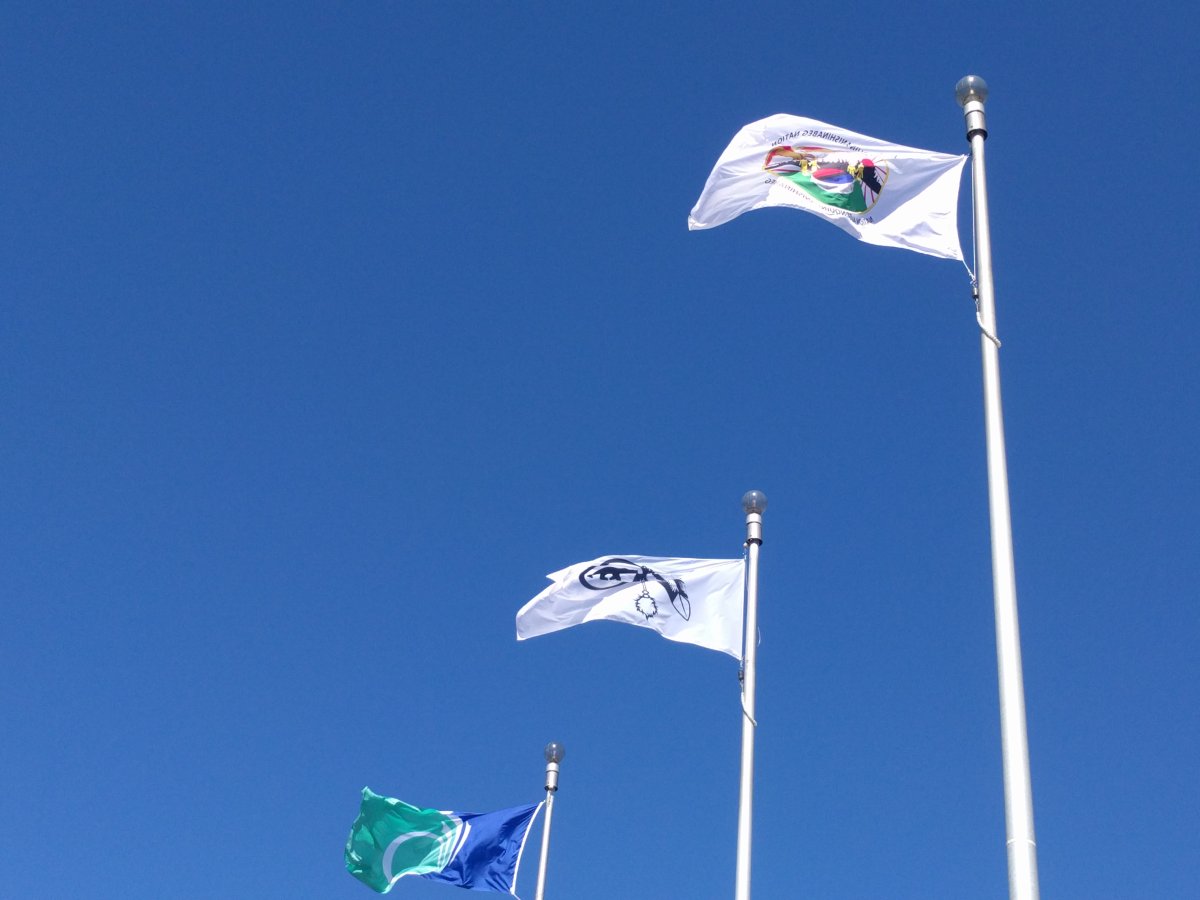The flags of the Algonquin Anishinabeg Nation Tribal Council and the Algonquins of Pikwakanagan First Nation will now fly forever among the row of flags that encircle the grounds of Ottawa City Hall on Laurier Avenue.

The council’s Grand Chief Verna Polson called the raising of the permanent flags a “historic” occasion – and a “start” on the city of Ottawa’s reconciliation with the Algonquin People.
In a speech at the flag-raising ceremony on Thursday – National Indigenous People Day in Canada – Ottawa Mayor Jim Watson reminded those present that Ottawa is built on unceded and unsurrendered Algonquin Anishinaabe territory.
“When it comes to reconciliation, this is a start,” Polson said. “Some people might think it’s just tokens but I think it’s a start on a good path of healing together, to understand one another.”
Looking up at the flags after ceremony, Polson said she felt “proud… very proud.”
Before, on June 21 – previously called National Aboriginal Day, until last year – the Algonquin flags were raised at city hall but were down after a day.
Watson said representatives of the Algonquin First Nation approached him this past March with a request to have the two flags fly permanently outside city hall.
Today, the two flags were smudged with smoke before being offered to the city and raised on the flagpoles. Watson called this an “honour” and a “significant” occasion for the city.
Chief Kirby Whiteduck of the Algonquins of Pikwakanagan First Nation said gestures like today’s flag-raising, while they are symbolic, do matter and demonstrate that the city is committed to helping Algonquin People “feel welcome in the city of Ottawa.”
“When we have symbols of Algonquin People and showcases of Indigenous elements and art and culture, it makes Algonquin youth and our students who come here and work here, say: ‘They’re recognizing us,'” he said. “If you look up, they’re flying just as high as every flag here … that to me, is a very strong symbol of recognition of what our role is and what our place should be within Canada, within the Algonquin territory.”
Polson said there’s still much work to be done in Ottawa and the Algonquin People’s reconciliation journey. Watson reiterated today the city is moving forward with its Reconciliation Action Plan, passed earlier this year as a response to the Truth and Reconciliation Commission’s “calls to action” for addressing the harm caused by Canada’s residential schools.
Reconciliation efforts the city is undertaking include more and improved consultation with First Nations ahead of city-organized events and projects – and a greater effort to hire more First Nations, Métis and Inuit staff at city hall, Watson told reporters afterward.
“Our numbers are quite low compared to the population we have in Ottawa and the surrounding area,” Watson said.
“Now it’s up to us and First Nations to keep our feet to the fire to make sure we continue to make progress on reconciliation.”
The two Algonquin Anishinaabe flags will also be permanently displayed in the council chambers and in the mayor’s boardroom inside city hall.
The flag-raising ceremony concluded with a roundhouse dance lead by three young First Nation dancers.
- Alberta to overhaul municipal rules to include sweeping new powers, municipal political parties
- Grocery code: How Ottawa has tried to get Loblaw, Walmart on board
- Military judges don’t have divided loyalties, Canada’s top court rules
- Canada, U.S., U.K. lay additional sanctions on Iran over attack on Israel




Comments